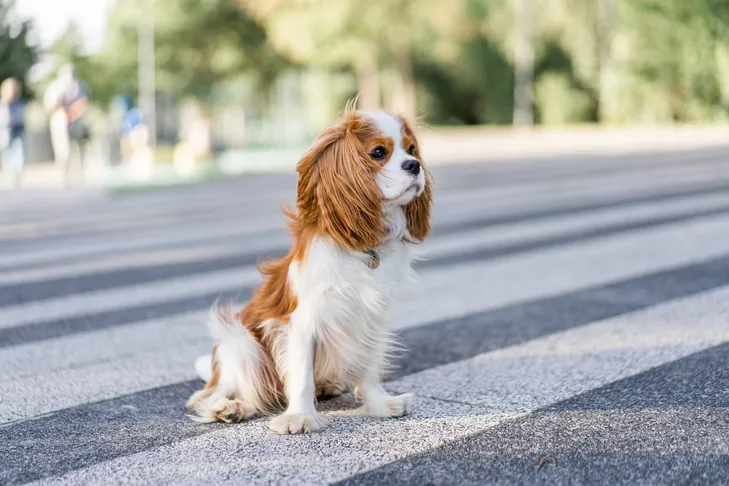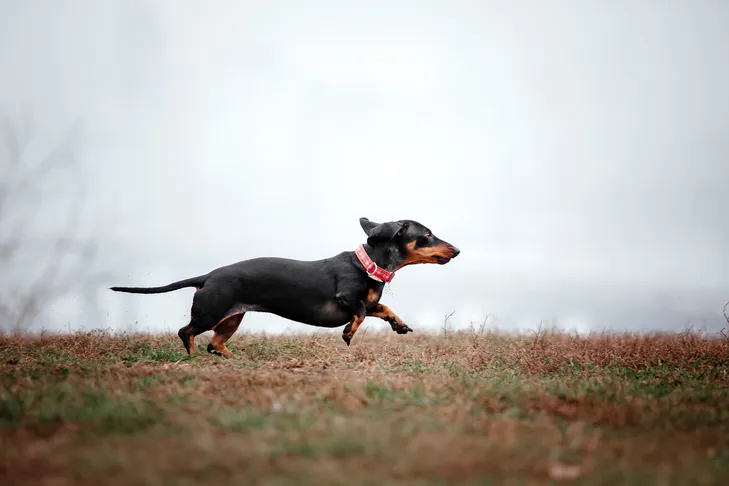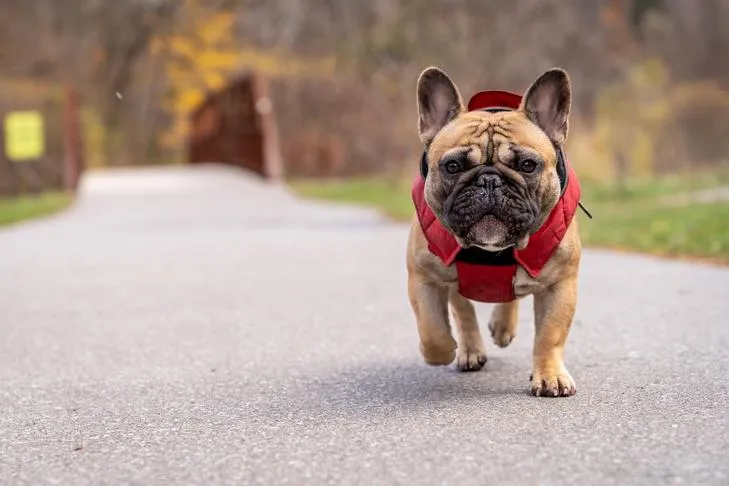It’s a familiar scenario for many dog owners: calling “come” repeatedly while their dog remains engrossed in sniffing a patch of grass. A reliable recall, where your dog immediately stops what they’re doing and returns to you upon command, is a big ask but an essential skill. More than just a convenience, it can be a lifesaver in emergencies, giving you peace of mind that your dog will Train Your Dog To Come To You No Matter What. This guide will walk you through the steps to achieve a truly dependable recall, ensuring your canine companion responds to your call every time, everywhere. Mastering this foundational command is crucial for any responsible pet parent, offering both safety and freedom for your furry friend. If you’re also looking to manage other behaviors, learning how to get my dog not to pull on leash can be another step towards a well-behaved companion.
Building Foundational Skills: Collar Grabs and the Name Game
Before diving into the “come” cue, two preliminary concepts are vital for building a strong recall: teaching your dog their name as a focus cue and familiarizing them with collar grabs. These skills lay the groundwork for effective communication and control.
Teaching Your Dog Their Name
Your dog’s name should signify “pay attention to me.” This command is the first step in gaining their focus, which is paramount for any subsequent training, especially when you want to train your dog to come to you no matter what.
To play the name game effectively:
- Hold a high-value treat near your dog’s nose.
- Slowly move the treat towards your face, encouraging them to look at you.
- The moment your dog makes eye contact, say their name, then “yes!” or click, and immediately give them the treat.
- Repeat this process multiple times in short sessions throughout the day.
- Once your dog consistently looks at you when you say their name, start adding distractions, but always reward their focus.
Soon, your dog will associate hearing their name with the potential for a reward, ensuring they’re always attentive to your calls. This focus is the primary building block for a reliable recall.
Playing ‘Gotcha’
Many dogs instinctively pull away when you attempt to grab their collar. However, in an emergency, or simply when you need to attach a leash or guide them for a bath, being able to safely and quickly take hold of their collar is crucial. This is where the “gotcha” game comes in, transforming collar grabs into a positive experience.
Here’s how to teach the “gotcha” command:
- Lure your dog close to you with an enticing, high-value treat. As they approach, let them lick or nibble it without fully releasing it.
- Gently and slowly say “gotcha” and grab their collar. The moment you have a firm grip, release the remainder of the treat for them to enjoy.
- As your dog becomes more comfortable, gradually increase the speed and firmness of your collar grabs.
- Once they are accustomed to quick, firm grabs, begin to delay the treat release until after you have said “gotcha” and successfully gripped their collar.
- Practice collar grabs in various environments to generalize the behavior, always ensuring a treat follows.
Once your dog understands that collar grabs are a good thing, they won’t bolt when you reach for them after a recall. This ensures that when they do train your dog to come to you no matter what, you can secure them effectively. For puppies learning to navigate the world, understanding how to teach a puppy to leash walk is another fundamental step.
 Cavalier King Charles Spaniel sitting attentively in a crosswalk at a park.
Cavalier King Charles Spaniel sitting attentively in a crosswalk at a park.
How to Train a Reliable Recall
With the name game and collar grabs mastered, you’re ready for the main event: recall training. The core principle here is to make yourself the most exciting element in your dog’s world. If you’re the source of all the fun, your dog will naturally want to come see what’s happening. Conversely, if your tone is angry or unenthusiastic, there’s little incentive for them to return.
Begin training in a calm, quiet environment with your dog on a leash, as it’s easier to be exciting without external competition. Use only the highest-value rewards your dog adores, such as a favorite toy for a game of tug-of-war or a piece of chicken. Make coming to you so incredibly rewarding that they wouldn’t even consider ignoring your call.
Follow these steps to build a strong recall:
- Start Close: With your dog just a few feet away, say their name, then “come.” Entice them to approach you by patting your legs, making kissy noises, or clapping your hands.
- Mark and Reward: The instant your dog reaches you, use a marker word like “yes!” or a clicker, then offer enthusiastic praise and their favorite reward.
- Increase Distance: Once your dog consistently comes when called, gradually add distance. Let them wander to the end of their leash before calling them back.
- Off-Leash in a Safe Space: Move to a quiet room and practice off-leash. To encourage their approach, try running backward as you say “come” – dogs often love a good chase!
- Vary Locations Indoors: Repeat the training in different rooms of your house to generalize the behavior.
- Add a “Sit” Command: When your dog happily runs to you every time, ask for a “sit” command upon their arrival. Then, mark, praise, and reward. This teaches them to remain stationary, rather than bouncing away immediately after receiving their treat.
- Incorporate “Gotcha”: Periodically add a “gotcha” after their “sit” to reinforce that it’s perfectly fine for you to take hold of their collar.
Always shower your dog with praise, petting, and play, in addition to treats or toys, when they come to you. This is not the time to be stingy with affection or rewards. Your dog should wholeheartedly believe that coming when called is an incredibly joyful experience. You can even make it a game by playing “round robin” (where multiple people take turns calling your dog) or “find me” (where you hide in another room before calling them). Consistency is key to train your dog to come to you no matter what. If you’re also working on other behavior, training a dog not to jump up on visitors can be integrated into your routine.
 Dachshund running gracefully through a green field with determination.
Dachshund running gracefully through a green field with determination.
Adding Distractions to Perfect the Recall
Once your dog reliably responds to your recall command anywhere inside the house, it’s time to introduce distractions. Start small to gradually build their resilience. Begin with minor distractions such as another pet in the room, someone cooking in the kitchen, or lightly tossing a ball in your hand. Slowly and incrementally increase the level of distraction.
Next, take your training outdoors. However, it’s critical not to let your dog roam freely just yet. Even if their recall is 100% reliable indoors, the outdoor environment presents a completely new set of challenges and temptations. Start your outdoor training with your dog on a 6-foot leash and repeat the previous steps. Then, gradually transition to a 20-foot or even 30-foot long line, slowly giving your dog more distance as they succeed. The purpose of the long line is not to physically reel your dog in if they ignore you, but to maintain control of the situation and prevent them from reinforcing the habit of running away. If your dog gets distracted, simply gather the leash, walk closer to them, and try the recall again from a shorter distance.
If you find your dog ignoring your calls, it’s a sign to troubleshoot your training approach. There can be numerous reasons why a dog might not come when called. Take several steps back in your training, reducing the level of distraction or distance, and ensure you are not asking for too much too soon. Patience and consistency are paramount.
In time, with dedicated practice, your dog will develop a reliable recall that works almost anywhere and anytime. However, it’s important to remember that even the best-trained dogs won’t be 100% perfect in every single scenario. Therefore, always exercise caution and only allow your dog off-leash in safe, controlled environments where their safety and the safety of others can be ensured. By consistently applying these methods, you will successfully train your dog to come to you no matter what, fostering a safer and more enjoyable relationship with your companion. Learning how to stop puppies from pulling on leash can also enhance their outdoor training experience.
 French Bulldog wearing a stylish jacket walking confidently on a paved path in a park.
French Bulldog wearing a stylish jacket walking confidently on a paved path in a park.
Conclusion
Achieving a reliable recall is one of the most vital commands you can teach your dog, ensuring their safety and your peace of mind in any situation. By diligently working through foundational skills like the name game and positive collar grabs, then progressively introducing the “come” cue with high-value rewards and carefully managed distractions, you can effectively train your dog to come to you no matter what. Remember that consistency, patience, and making yourself the most exciting element in their environment are key to success. This journey requires dedication, but the reward is a stronger bond with your canine companion and the confidence that they will always return to your side. Continue to practice and reinforce these behaviors, and you’ll soon enjoy the freedom and security that a truly dependable recall provides.
